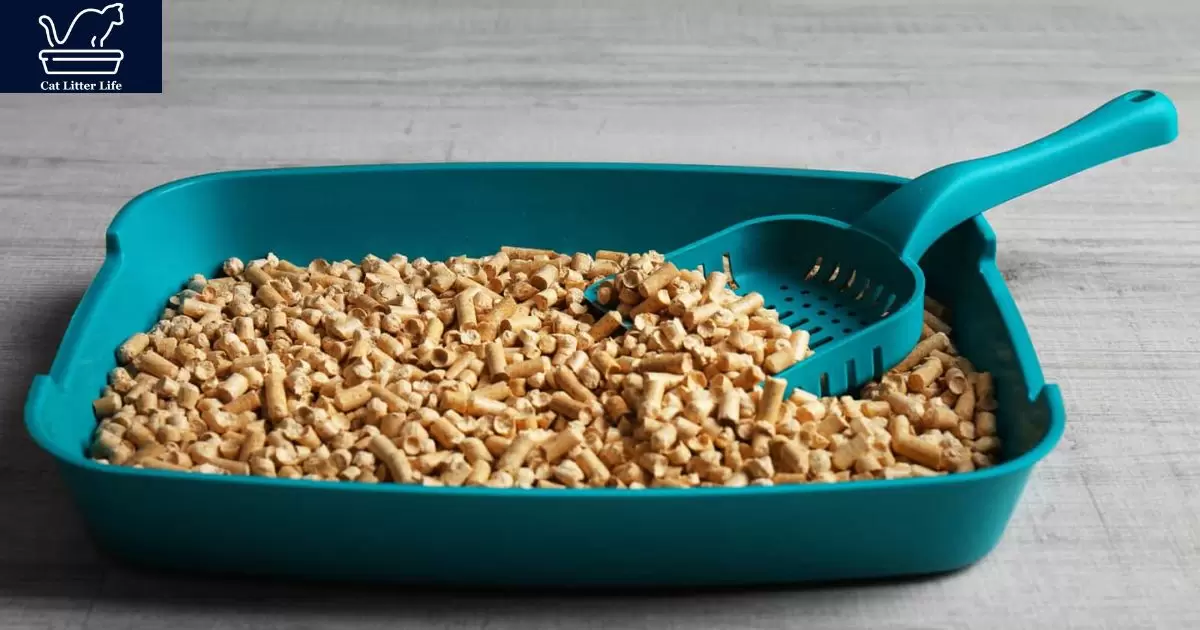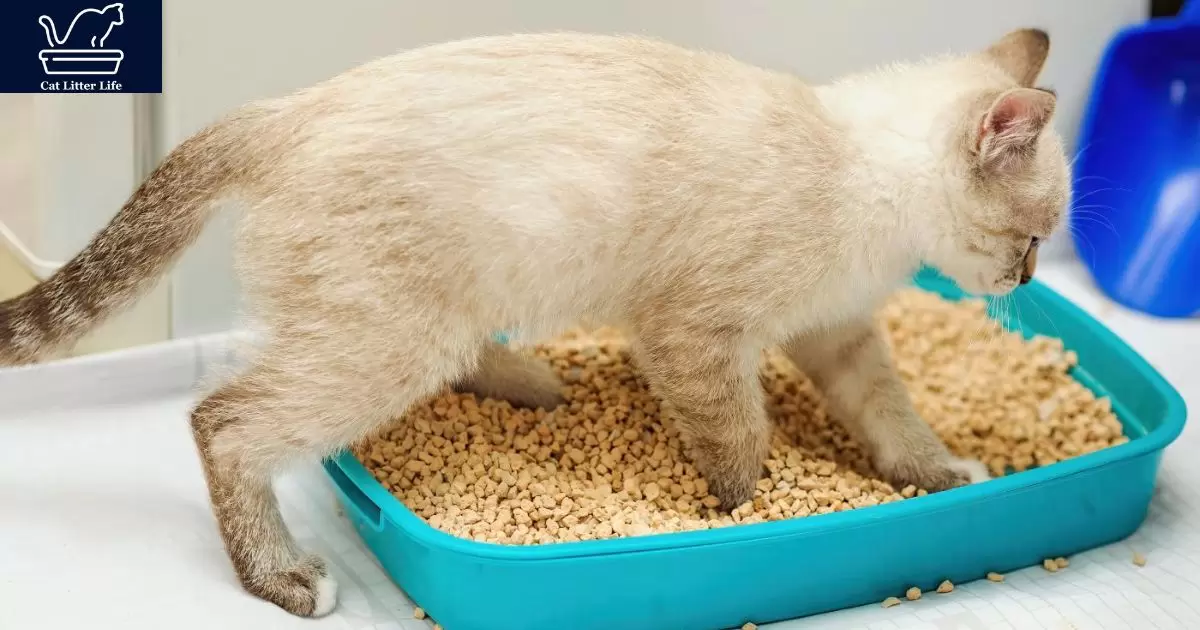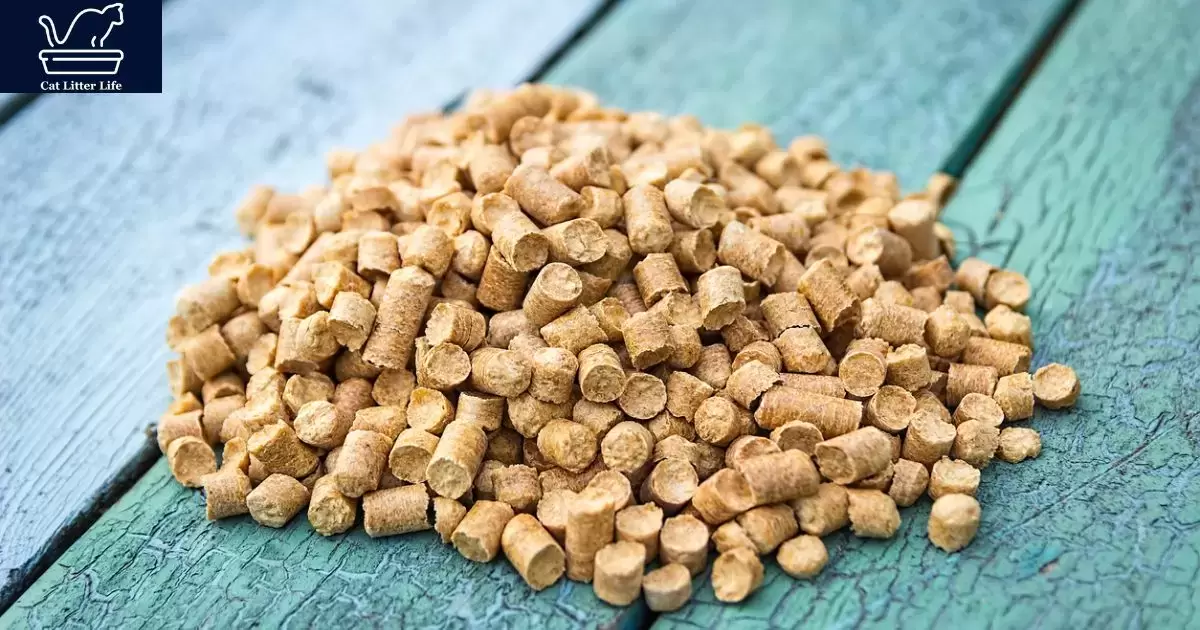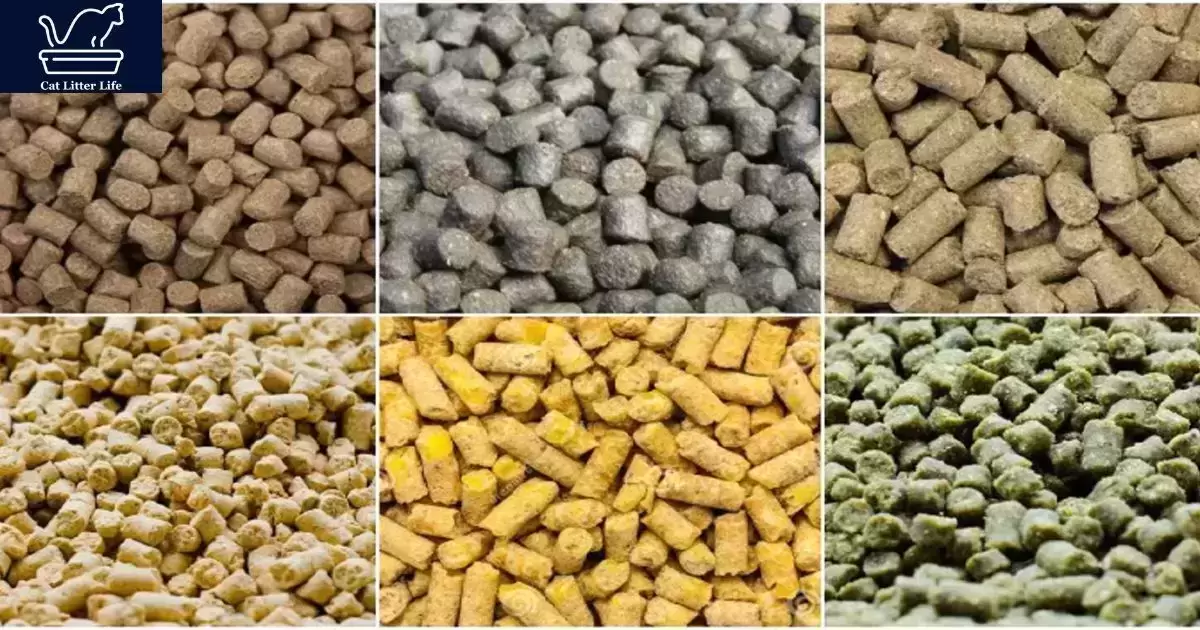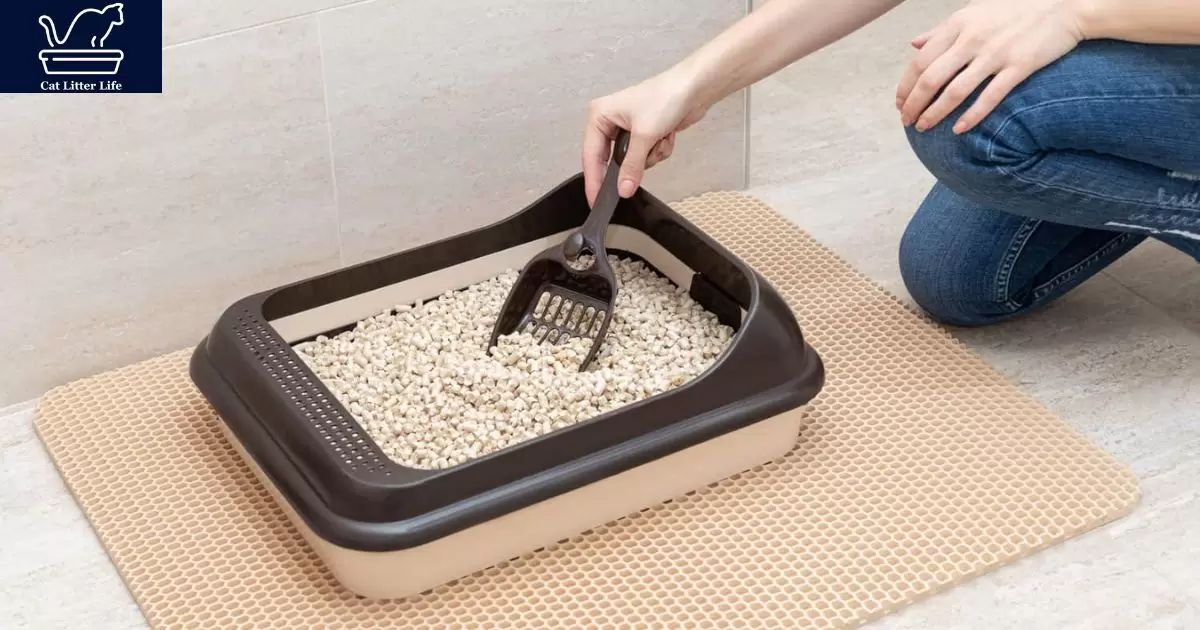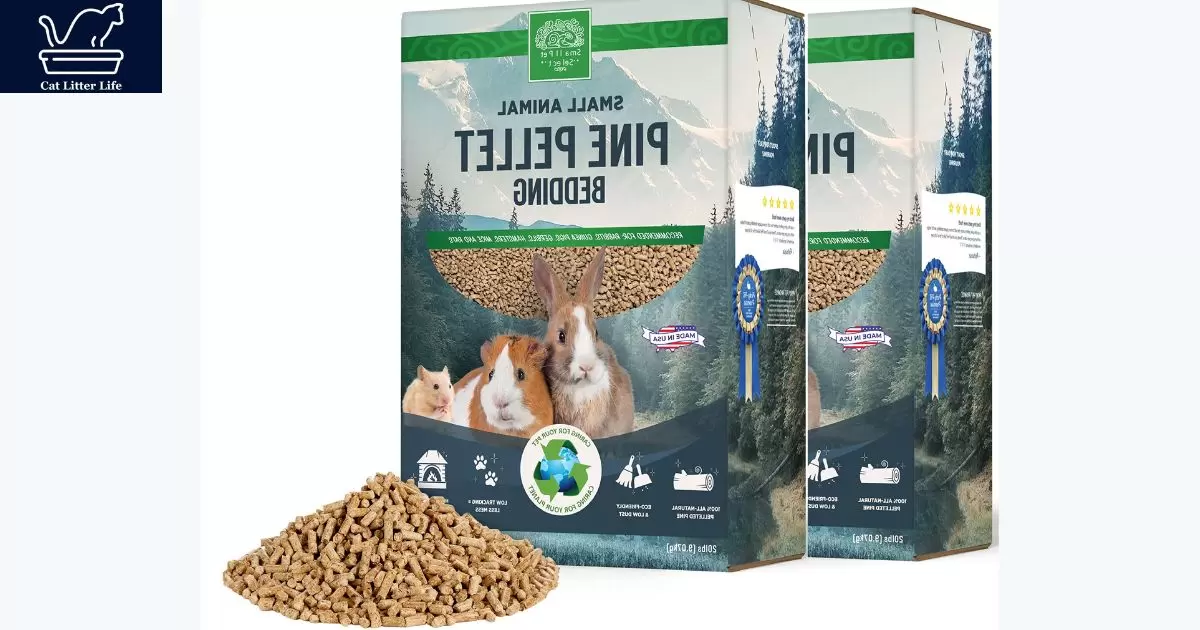Horse pellets are checked with bedding made from compressed sawdust or wooden shavings. They are an absorbent cloth used for stall flooring and bedding for horses. The pellets are an alternative cat clutter option made from pine, cedar, or other softwoods.
The question is, can I use horse pellets for cat litter? It’s far more common for cat owners to search out a low-priced, herbal clutter. Horse stall pellets are an absorbent, biodegradable preference. The pellets control odor and produce less dust than clay litter. Converting stall bedding into cat clutter can shop cash.
While not all horse pellets are created equal, high-quality pine and cedar pellets make great cat litter. The pellets absorb urine, control odor, and are easy to scoop. Horse pellets for cat litter also compost well compared to clay. With some trial and error, horse pellets can become a wallet-friendly and eco-friendly litter option.
Key Takeaways
- Pine pellets made for horse bedding can be repurposed as cat litter. They are highly absorbent and control odors well.
- Kiln-dried pine is safe for cats. The high heat removes any harmful phenols or acids from the softwood.
- Pine pellets are very affordable, and sold in bulk bags for horse stalls. This makes the fee in keeping with pound tons decrease than clay muddle.
- Pine pellets are biodegradable and green, crafted from a sustainable wooden source. Clay litter requires mining.
- The pellets produce very little dust and resist tracking around the home compared to clay litter.
- Pine’s natural oils help suppress ammonia odors from cat urine to keep the litter fresher.
- Scooping and changing pine pellets needs to be done more frequently than clay litter to prevent odors.
- Most cats can transition to pine pellets but some take time to adjust to the new texture. Mixing the litter can help.
- While not for all cats/owners, pine pellets are an affordable, low-dust green litter option worth trying.
Are Pine Pellets Safe For Cats?
Pine pellets crafted from 100% kiln-dried pine are considered secure for use as cat clutter. The excessive warmth from the kiln drying system removes any dangerous phenols or acids from the timber. This makes the pine pellets completely safe for cats.
Softwood pellets are safer than hardwoods for cat litter. Pine is an excellent softwood option. The phenols found in hardwoods like cedar can be toxic to cats over time. Soft pine does contain some natural aromatic oils. But these are not harmful to cats when properly kiln-dried.
When shopping for equine bedding or stall pellets, ensure you’re selecting the right product. Look for ones specifically marketed as such, and steer clear of pine shavings or any scented options. Opt for pellets made from 100% pine without added chemicals or fragrances, such as Tidy Cats Litter Bucket.
Benefits of Using Pine Pellets for Cat Litter
There are many advantages to using pine horse bedding pellets as litter for cats:
Extremely Absorbent
Pine pellets are highly absorbent due to their dense, compact nature. The pellets rapidly soak up liquid on contact. As they soak up moisture, the pellets extend barely and ruin down into sawdust.
Pine pellets have an absorbency rate of almost three hundred% of their weight. This allows maintain your cat’s muddle field plenty drier than conventional clay muddle. The pellets effectively absorb urine and other liquids to control odors.
Natural Odor Control
Pine naturally contains aromatic oils that help suppress ammonia odors from cat urine. The kiln drying procedure accentuates those clean, piney scents. Pine oil’s disinfectant residences also inhibit microorganisms increase.
This results in outstanding natural odor control for cat waste. The pine scent leaves little to no lingering odors in the litter box. Owners find the light pine fragrance much more pleasant than the smell of ammonia from urine.
Low Tracking
The dense pellet format resists tracking by cats’ paws. Pine pellets are heavier than clay litter so they do not scatter as readily. Even as the pellets disintegrate into sawdust, they tend to stay put in the litter box. This keeps your floors remarkably cleaner.
Low Dust
There is virtually no dust with pine pellets, especially when compared to traditional clay litter. This helps minimize airborne allergens. The loss of dirt additionally method cleaner air quality for both cats and owners. For cats or proprietors with respiration issues, pine pellets make a notable low-dirt desire.
Biodegradable and Eco-Friendly pine litter pellets
Pine pellets are a green and sustainable desire. Since they may be crafted from compressed pine, they are 100% biodegradable. Pine is fast-growing and plentiful. Making litter from pine takes far fewer resources than mining clay or silica.
Cost-Effective
Pine pellets for horses are typically sold in 40 lb bags for $5 to $10. This bulk pricing makes it extremely affordable compared to buying smaller bags of clay litter. Cost savings are one of the main motivators for switching to pine pellets. The pellets may need changing a bit more frequently. But the overall costs are still lower.
Potential Drawbacks to Pine Pellets
While pine pellets make an excellent eco-friendly litter, there are a few potential disadvantages to consider:
Need More Frequent Changing
The pellets must be scooped daily and changed completely every 5-7 days. The saturated pellets and sawdust can develop an ammonia odor faster than clumping clay litter. But with a good scooping routine, the odor control remains solid.
Messier Cleaning
The pellets turn into sawdust when wet, which can make cleaning a bit messier. The pieces are larger and heavier than clay litter. Some owners prefer clumping litter for easier, tidier scooping and disposal. But others do not mind the tradeoff for the other benefits.
Transition Period
It may take cats a few weeks to adjust to the new texture of pine pellets. Mixing the pellets with their old litter can help ease the transition. Spreading some pellets around the house for cats to walk on can also help them get accustomed to the feel under their paws.
Availability
While widely available at farm supply and hardware stores, pine pellets may not be sold at all pet supply shops. It is simple to order them online, but less convenient than picking up litter at the store. If local shops do not carry pine pellets, request they order them or purchase them online.
Scooping and Cleaning Pine Pellet Litter
Scooping and changing pine pellets is quite simple:
- Scoop daily: Scoop urine clumps and solid waste at least once per day. This helps control ammonia odors.
- Change completely every 5-7 days: Dump all litter and wash the box with mild soap and water weekly to prevent odors.
- Add fresh pellets: Add 2-3 inches of new pine pellets after changing litter. Top off as needed between changes.
- Dispose of pellets and sawdust in trash: The heavier pine pieces won’t flush easily so bag and trash used pellets.
With the right cleaning routine, pine pellets stay fresher much longer than traditional clumping clay litters. The natural pine fragrance continues neutralizing odors between changes.
Pros and Cons: Can I Use Horse Pellets For Cat Litter?
| Pros | Cons |
| Highly absorbent, expanding up to 300% when wet | Need more frequent scooping and changing |
| Pine’s natural oils suppress ammonia odors | Messier to scoop as pellets turn to sawdust |
| Low tracking due to heavier pellets | Some cats may resist texture change |
| Extremely low dust | Less convenient if not sold locally |
| 100% eco-friendly and biodegradable | Not ideal for owners who rarely scoop |
| Much cheaper per pound than clay litter | |
| No chemical fragrances |
Are Pine Pellets the Best Litter for Your Cat?
When it involves selecting the first-class cat clutter, there’s no definitive right or wrong answer. It comes down to your cat’s possibilities, your cleansing conduct, fees, and different factors. Here are some final tips on if pine pellets may be suitable for your feline:
- Consider your cat’s personality: Some cats adapt easily while others prefer not to switch litters. Do a gradual transition to see if your cat accepts pine pellets.
- Assess your cleaning schedule: Pine pellets require diligent daily scooping and weekly changing to stay fresh. If you often forget to scoop, they may not be the best option.
- Compare costs: Pine pellets are very affordable per pound but you may go through them faster than clay litter. Overall costs are generally still lower.
- Choose low tracking & dust: If your cat tracks everywhere or has respiratory issues, pine pellets are an excellent low dust, low tracking option.
- Opt for eco-friendly: For greener, biodegradable litter, pine pellets are a sustainable choice compared to traditional clay.
- Troubleshoot issues: Try adding more pellets, mixing in old litter, or using a different style box if your cat won’t use pine pellets at first.
While not for everyone, pine horse bedding pellets can make an excellent eco-friendly, odor-controlling litter for many cats. If scooped diligently, they are absorbent, low tracking, and low dust. Their affordability is also a major perk. Try premium kiln-dried pine pellets to see if they are the right solution for your feline friend.
FAQ’s
Are pine pellets safe for my cat?
Yes, 100% kiln-dried pine pellets are non-toxic and safe for pussycat use.
How absorbent are stall pellets compared to clay litter?
Pine pellets are extremely absorbent, increasing up to 300% in their weight to take in moisture.
Do pine pellets control odors better than traditional litters?
Yes, pine’s natural oils suppress ammonia smells and bacteria growth very effectively.
Will pine pellet pieces track all over my home?
No, the heavier wood pellets resist tracking compared to lighter clay litter.
Are pine pellets a low-cost and eco-friendly preference?
Yes, bulk pine pellets fee much less than clay muddles and are one hundred% biodegradable.
Conclusion
Pine pellets made from kiln-dried softwood are a safe, eco-friendly alternative to traditional clay cat litter. The dense wood pellets are highly absorbent and naturally suppress odors. Pine oil’s antibacterial properties help reduce ammonia smells from urine. Litter box cleaning is needed more frequently with pellets. But the pine fragrance continues neutralizing odors between changes.
Bulk pine pellets, recognized as one of the best litters for odor control and clumping, also cost a fraction compared to clay litter. While not suitable for all cats, pine pellets are an affordable, low-tracking, low-dust option worth trying. With the right scooping schedule, pine horse bedding pellets can be a great solution for many cat owners seeking a greener, cost-effective litter.
